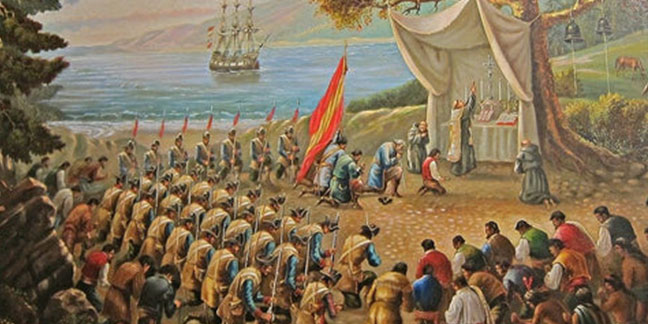 Provided by State Archives of Florida/Florida MemoryAs we all know, Thanksgiving honors the pilgrims and Native Americans that came together for a feast in the Plymouth Colony in Massachusetts in 1621, to thank God for the abundance of crops.
Provided by State Archives of Florida/Florida MemoryAs we all know, Thanksgiving honors the pilgrims and Native Americans that came together for a feast in the Plymouth Colony in Massachusetts in 1621, to thank God for the abundance of crops.
However, did you know that 56 years before Plymouth Rock, on Sept. 8, 1565, the first Thanksgiving Mass was offered in Saint Augustine, Florida?
As soon as the Spanish fleet landed in the New World, before anything else, they offered a Mass of thanksgiving.
A rustic altar that still stands in the “Nombre de Dios” Mission recalls the Mass offered by Father Francisco López de Mendoza Grajales, diocesan priest and captain of the Spanish fleet. The Mass was attended by the founder of the city, Admiral Don Pedro Menéndez de Avilés, settlers, soldiers and the native Timucuan people.
Historian John Gilmary Shea asserts that the Mass was celebrated “to sanctify the earth and receive the blessings of heaven before taking the first step in building human habitation.”
At the end of the Mass the Spanish soldiers stripped off their armor, the Indigenous Peoples their arrows and both groups shared food.
The Spanish are believed to have contributed garlic stew with pork, chickpeas, and olive oil and the natives contributed wild turkey, fish, shellfish, squash, beans and fruit.
Currently in the mission stands the National Sanctuary of the Virgin of La Leche and Good Birth, a devotion brought from Spain in 1603.
According to the local historian Raphael Cosme, “the Spanish Thanksgiving Day tradition continued and spread throughout the missions of Florida, the Carolinas,
Alabama, Mississippi, and Louisiana,” until 1763 when Spanish residents of Saint Augustine left to the island of Cuba and other territories dominated by the Spanish crown.
— Catholic News Herald


